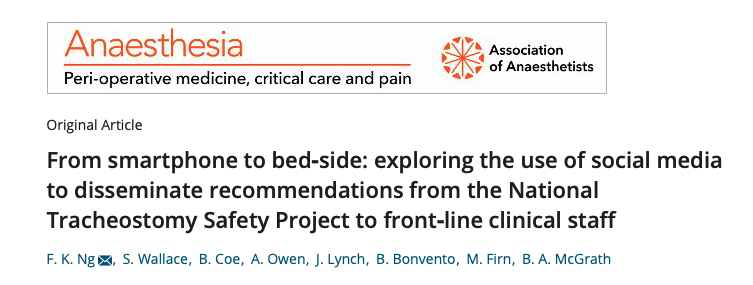National Tracheostomy Safety Project publishes results of our social media strategy, reaching 1.1 million users in 2018

Traditional methods used to disseminate educational resources to front‐line healthcare staff have several limitations. Social media may increase the visibility of these resources among targeted groups and communities. Our project aimed to disseminate key clinical messages from the National Tracheostomy Safety Project to those caring for patients with tracheostomies or laryngectomies. We commissioned an external media company to design educational material and devise a marketing strategy. We developed videos to communicate recommendations from the safety project and used Facebook, Twitter, YouTube and LinkedIn to deliver these to our target users. We recorded 629,270 impressions over a paid 12‐week campaign. Our YouTube channel registered more than a five‐fold increase in views and watch time during the campaign as compared with the previous year. Around two‐thirds of views across all platforms were from peer‐to‐peer sharing. We spent £4140 on social media advertising, with each view and click costing £0.02 and £0.67, respectively. This intelligence‐led approach using social media is an effective and efficient method to disseminate knowledge on the principles of safe tracheostomy care to front‐line clinical staff. Similar strategies may be effective for other patient safety topics, especially when targeting groups that do not use medical journals or other traditional means of dissemination.